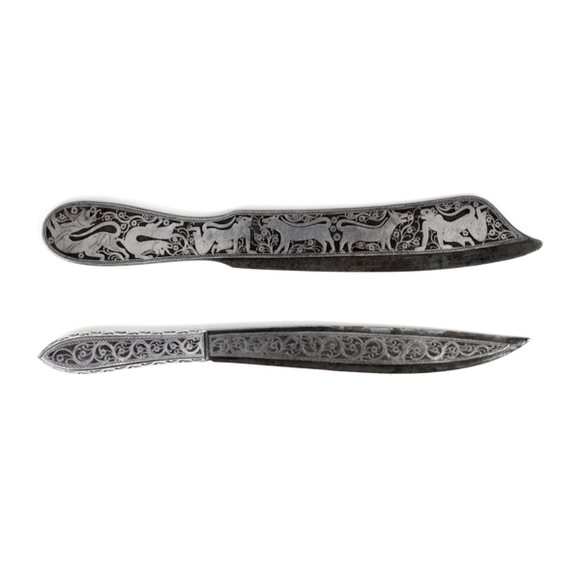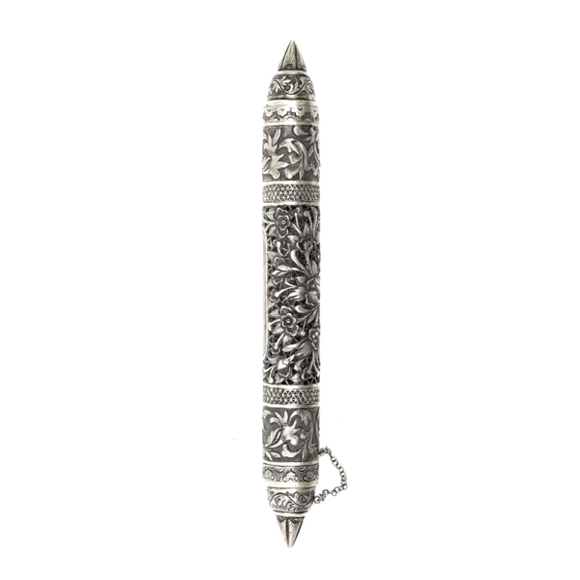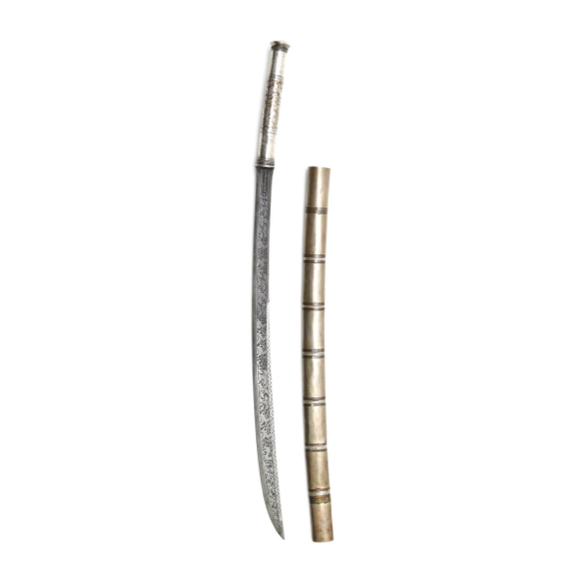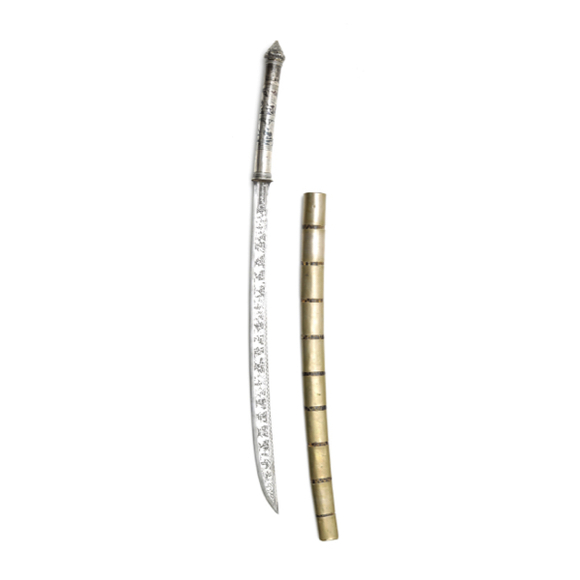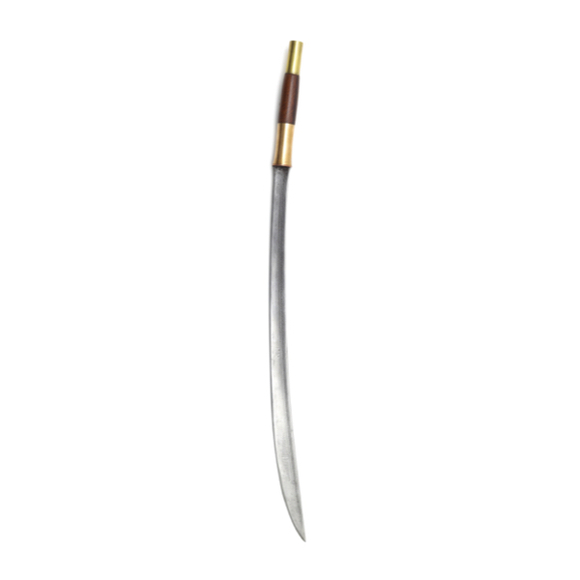Very rare set of Burmese knives from Mindan village.

84.6 cm
64.2 cm
Base 10.5 mm
Middle 5.5 mm
At wide end 2.5 mm
Base 20.5 mm
Middle 31 mm
At widest 41 mm
765 grams
19.8 cm from hilt
Kachin, Northern Burma
(Present-day Myanmar)
Iron, steel, silver, copper, brass, resin, wood
Description
A nice example of a large so-called Kachin style dha with its characteristic straight single-edged blade that widens gradually towards the tip. It may look clumsy in profile, but due to its clever distal tapering, going from very thick to nicely thinned, it actually has very good handling characteristics.
The steel remains largely in its original surface finish with a smooth surface with some minor scratches left from working-life sharpening sessions. It retains a good, original geometry with no signs of excessive grinding or sharpening.
These swords were usually forged much like Japanese swords, with a high-carbon steel outer jacket around a softer iron core. The jacket was then differentially hardened to create a temper line (hamon in Japanese) of crystallized steel. This sword is no different, and even in its current state one can make out the subtle wavy effects of this line.
Mountings
The sword is mounted in a hilt and scabbard that are straight due to the blade shape but are otherwise in typical Shan style. The Shan were a people that migrated across Burma and were respected throughout the region for their craftsmanship, including bladesmithing and silversmithing.
It consists of a hilt of octagonal cross-section with typical Shan style woven silver wire grip, the rest being covered with silver sheet of high purity with fine decorative borders.
The wooden scabbard has a silver mouthpiece and endpiece with decorative cutouts, all with a braided silver decorative border. The center of the scabbard is further reinforced with five silver bands, again with decorative borders. Both ends of the scabbard are protected from deformation by stronger brass.
Attribution
Exhibiting a blade style that is mostly associated with the Kachin while showing a style and sophistication in its mountings that are typical for the Shan, the sword was most likely a Shan piece. Ian Heath mentions that the Shans were usually armed with a mixture of their own, curved and pointy Shan style dha while many also preferred the slashing optimized Kachin dha of their warlike northern Kachin neighbors.1 There was also some fluidity between Shan and Kachin, with some Kachin adopted Shan lifestyles and effectively becoming Shan.
Notes
1. Heath, Ian; Armies of the 19th century, Asia, Burma and Indo-China, Foundry Books, 1998. Page 98.
Conclusion
A nice and large example of a Kachin style dha with silver-clad hilt and scabbard that are hallmarks of Shan workmanship that was prized throughout Burma. Blade in very good condition.


















Fine silver overlaid dha made in Mindan village, south of Mandalay, gained fame in the 19th…

